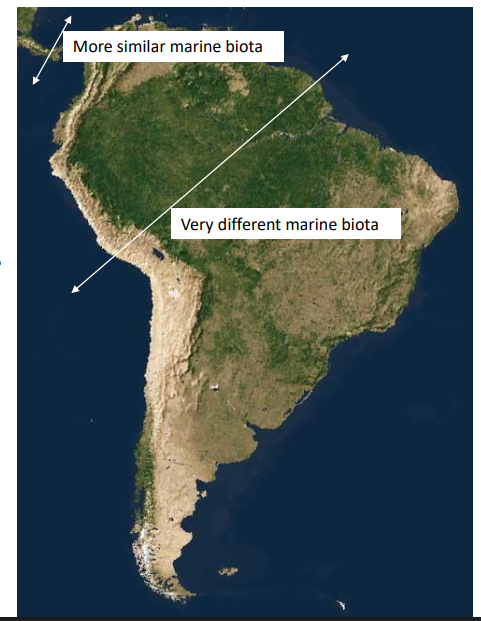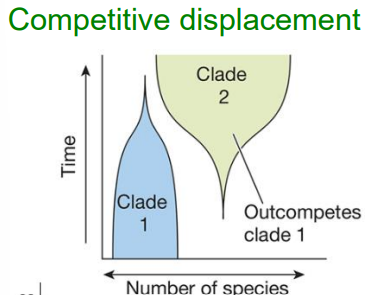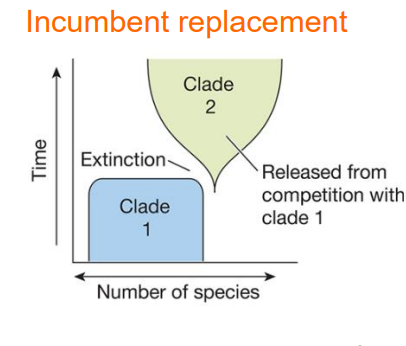Biogeography & Biodiversity: Evoltion test 1
1/23
There's no tags or description
Looks like no tags are added yet.
Name | Mastery | Learn | Test | Matching | Spaced |
|---|
No study sessions yet.
24 Terms
The organisms we see in any given place are different than most other places. whyy?
(also biological evidence for evolution)
Similar climates occur across the globe, but the organisms inhabiting different regions are often unrelated
Barriers to dispersal are related to differences in the assemblage of species.
What is associated with greater differences between sp.?
larger barrier

Remote islands have mostly species capable of long-distance dispersal But, when introduced by humans other species flourish. So why are islands biased towards having certain types of species?
Evolutionary history
Island species usually most closely related to
species on nearest mainland
Phylogeny often reflects
history of geographic barriers
Dispersal
movement to new areas
Vicariance
physical barrier splits ranges
Extinction (of populations)
removes parts of a geographic range
is extinction frequent? why?
Frequent cause of discontinuous distributions (e.g. after glaciation)
Why are there limits on species’ ranges?
Dispersal limited by physical barriers, low mate availability, ecological conditions
Competition
Climate & ecological niche
diversification rate
r
net rate of change in number of species over time
Speciation rate
(λ)
rate at which new species are formed
– Extinction rate
(μ)
rate at which species are lost
diversification rate formula
r = λ - μ
Diversification rates vary greatly across
taxa, even those of similar age
Three major patterns in fossil record
1. Mass extinctions are common
2. Diversity often sits at an equilibrium
3. Diversity rebounds after mass extinctions
Diversity often sits at an equilibrium
Diversity rebounds after mass extinctions
These two patterns suggest
competition
Direct competition
one taxon outcompetes another

Incumbent replacement
a taxon takes advantage of the other’s absence

Diversity is highest in
The tropics (vs. the temperate zone)
At middle elevations (in mountains)
On land (vs. in the water)
Evolutionary hypotheses to explain diversity differences:
• H1: Positive feedback hypothesis
H2: Time for speciation hypothesis:
• H1: Positive feedback hypothesis
higher diversity leads to higher diversification rates
H2: Time for speciation hypothesis
Habitats with high levels of diversity are older, so there has been more time for speciation to take place
sp. are more diverse in places
they have inhabited longer